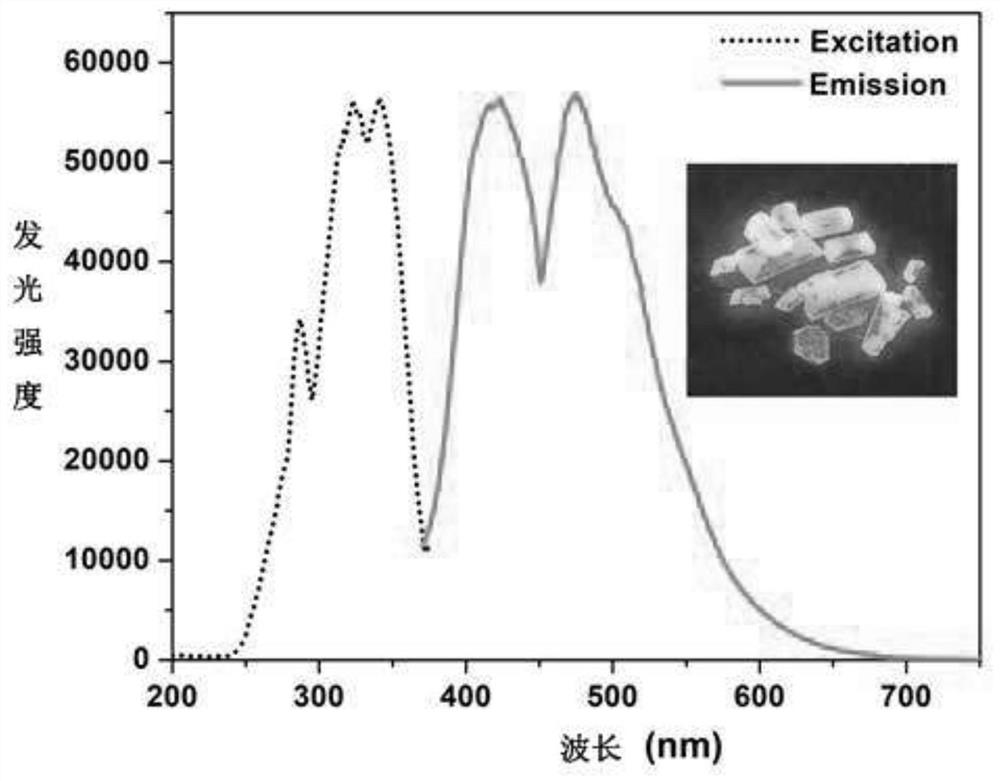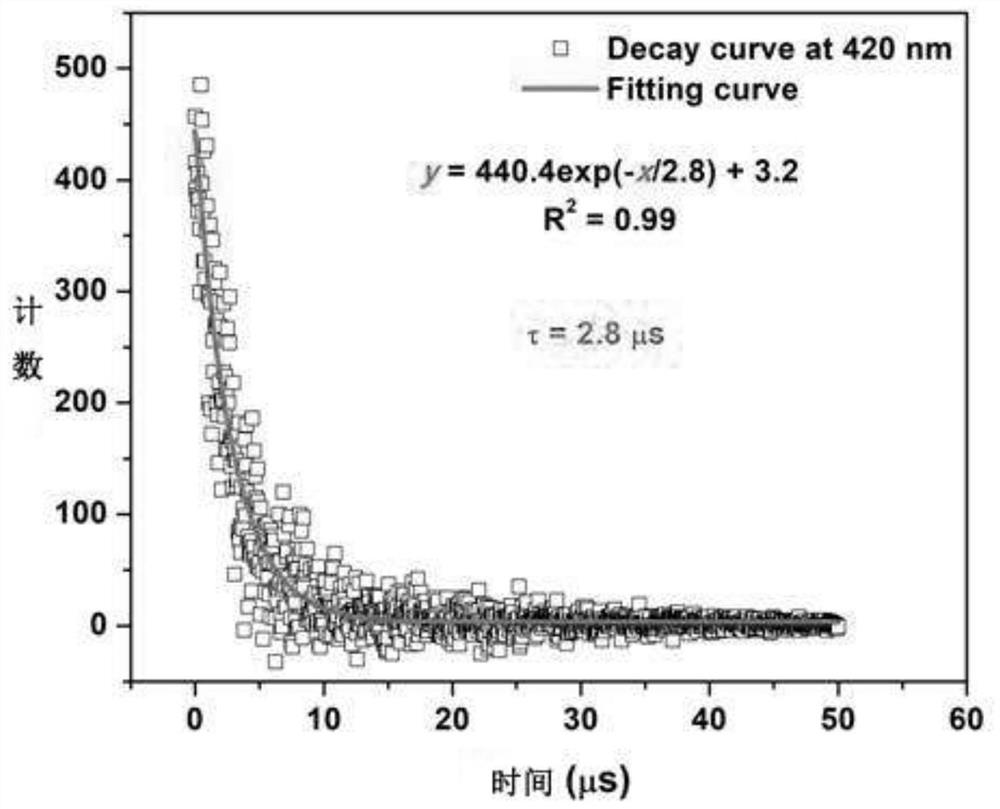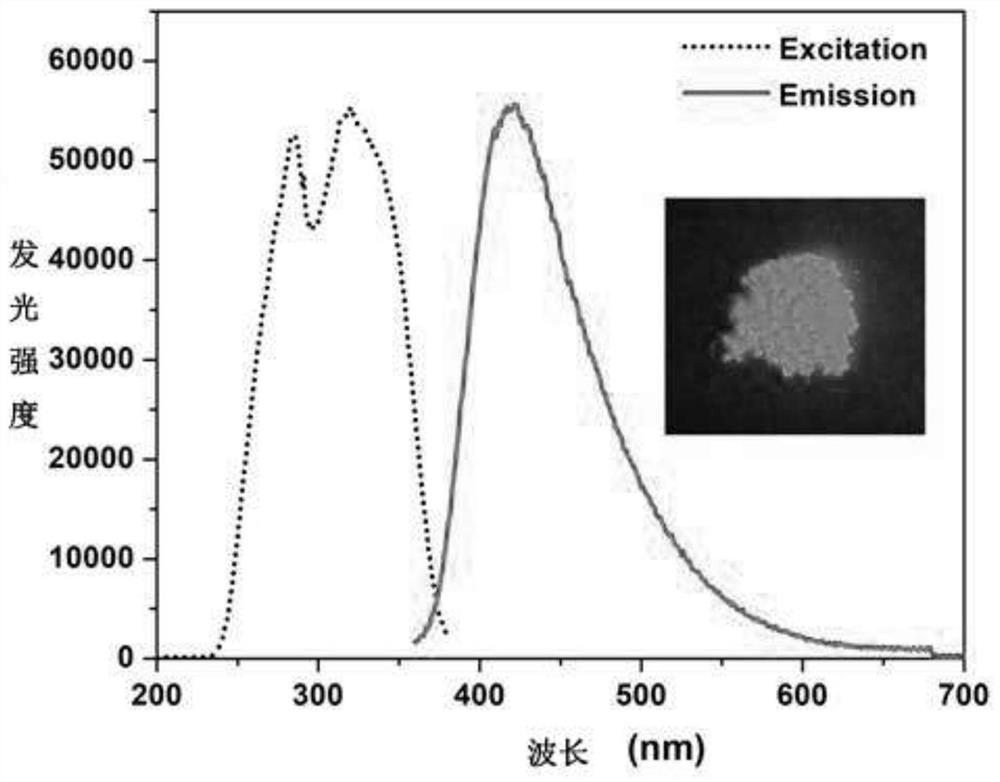A method and test paper for quantitatively detecting the concentration of perchlorate ion based on aggregation-induced luminescence
A technology of aggregation-induced luminescence and perchlorate, which is applied in the field of physical and chemical analysis of chemical substances, can solve the problems of insufficient quickness and convenience, reduced sensitivity, labor and time-consuming, etc., and achieves low cost, high sensitivity and good selectivity.
- Summary
- Abstract
- Description
- Claims
- Application Information
AI Technical Summary
Problems solved by technology
Method used
Image
Examples
Embodiment 1
[0050] This embodiment discloses a method for quantitatively detecting perchlorate ion concentration based on aggregation-induced luminescence, comprising the following steps:
[0051] Step 1, preparing a tetraphenylphosphonium chloride test solution with a concentration of 0.1M;
[0052] First, tetraphenylphosphonium chloride was added to HEPES buffer solution with a pH value of 7.4 to prepare tetraphenylphosphonium chloride test solution of 0.1M tetraphenylphosphonium chloride;
[0053] Step 2, obtaining a standard curve obtained through linear fitting between phosphorescence intensity and perchlorate ion concentration;
[0054] A variety of perchlorate ions with a concentration distribution in the range of 0.0 to 100.0 μM are added to the tetraphenylphosphonium chloride test solution, and precipitated microcrystalline tetraphenylpotassium perchlorate is generated in the test solution;
[0055] Use a xenon arc lamp to record the phosphorescence emission spectrum of the test...
Embodiment 2
[0061] This embodiment discloses a method for quantitative detection of perchlorate ion concentration in a self-fluorescence composite matrix based on time-gated detection,
[0062] Include the following steps:
[0063] Step 1, preparing a test solution of autofluorescent complex matrix tetraphenylphosphonium chloride with a concentration of 0.1M;
[0064] Firstly, tetraphenylphosphonium chloride and human serum were added into the HEPES buffer solution with a pH value of 7.4 to prepare a test solution of tetraphenylphosphonium chloride with a concentration of 0.1M having an autofluorescence complex matrix;
[0065] Step 2, obtaining a standard curve obtained through linear fitting between the phosphorescence intensity and the concentration of perchlorate ions in the complex matrix;
[0066] A variety of perchlorate ions with a concentration distribution in the range of 0.0 to 120.0 μM are added to the self-fluorescent complex matrix tetraphenylphosphonium chloride test solut...
Embodiment 3
[0075] This embodiment discloses a solid matrix room temperature phosphorescent perchlorate ion detection test paper. The test paper strip made of filter paper is soaked in a solution with a concentration of 0.2M tetraphenylphosphonium chloride for more than one minute, and dried at room temperature to obtain the test paper. note.
[0076] Fifty test paper strips made of filter paper were soaked in 0.2M TPPCl solution for 1 minute, and then dried at room temperature to obtain test paper strips. A series of different amounts of perchlorate ions in the range of 0.0-10.0 μg were dropped on the test paper respectively, and the luminescence spectrum of the obtained test paper was recorded under the excitation light of 370nm, and photographed under the ultraviolet light after drying. Selectivity tests were carried out according to the above procedure, adding different anions, including NO 3 – ,PO 4 3– ,CO 3 2- ,CH 3 CO 2 – , SO 4 2– , SO 3 2– ,S 2 o 3 2– ,S 2– ,ClO ...
PUM
 Login to View More
Login to View More Abstract
Description
Claims
Application Information
 Login to View More
Login to View More - R&D
- Intellectual Property
- Life Sciences
- Materials
- Tech Scout
- Unparalleled Data Quality
- Higher Quality Content
- 60% Fewer Hallucinations
Browse by: Latest US Patents, China's latest patents, Technical Efficacy Thesaurus, Application Domain, Technology Topic, Popular Technical Reports.
© 2025 PatSnap. All rights reserved.Legal|Privacy policy|Modern Slavery Act Transparency Statement|Sitemap|About US| Contact US: help@patsnap.com



